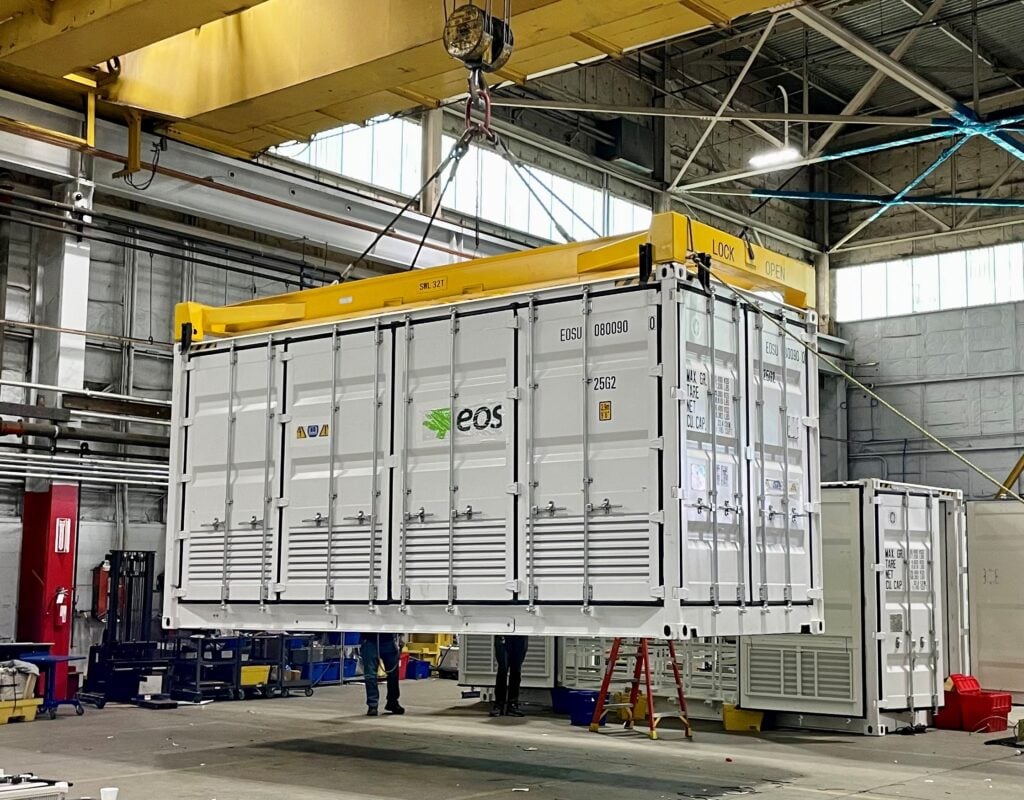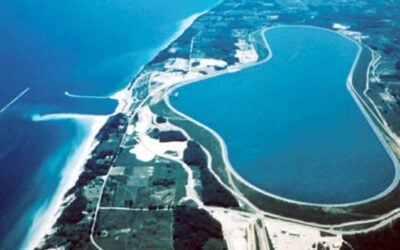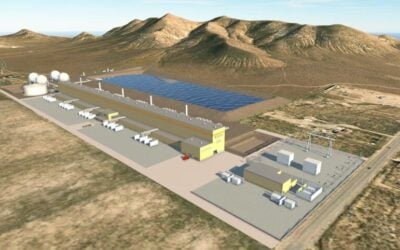
US zinc battery and energy storage system maker Eos Energy Enterprises has reported year-on-year revenue growth of 243% from the first half of 2024.
The New Jersey-headquartered startup reported its financial results for the second quarter of 2025 and the half-year to date yesterday (30 July), ahead of an earnings call this morning.
It reported Q2 2025 revenue of US$15.2 million, which was its highest quarterly figure to date and almost equal to the US$15.6 million revenue it brought in for 2024. Half-year revenue in 2025 stood at US$25.7 million, 243% higher than the US$7.5 million reported for H1 2024.
Profitability is still a little way off for the company as it continues to invest in manufacturing scale and automation and find customers for its proprietary stackable zinc hybrid cathode battery storage technology.
Try Premium for just $1
- Full premium access for the first month at only $1
- Converts to an annual rate after 30 days unless cancelled
- Cancel anytime during the trial period
Premium Benefits
- Expert industry analysis and interviews
- Digital access to PV Tech Power journal
- Exclusive event discounts
Or get the full Premium subscription right away
Or continue reading this article for free
Eos claims this technology is the only viable alternative to lithium-ion (Li-ion) or lead-acid for storage applications requiring 3-hour to 12-hour durations, although it is one of a number of non-lithium technology providers focusing on long-duration energy storage (LDES) applications, for which lithium is itself becoming recognised as more competitive.
The company also hopes that demand for domestically manufactured solutions with domestic supply chains could help it gain traction in the US market. Its products are manufactured at sites in Turtle Creek, Pennsylvania.
Its cost of goods sold nearly doubled year-on-year, from US$42.35 million in H1 2024 to US$81.19 million this year.
“As a nascent technology with a new manufacturing process that is early in its product lifecycle, the Company still faces significant costs associated with production start-up, commissioning of various components, modules and subsystems and other related costs,” Eos wrote in its Form 10-K filed with the US Securities and Exchange Commission (SEC).
“The Company expects its cost of goods sold to exceed revenues in the near term as it continues to scale production and prepares battery energy storage systems delivered to customers to go-live.”
R&D expenses and selling, general and administrative expenses also rose 49% and 82% respectively.
In all, Eos’ gross loss widened from US$13.2 million at the end of Q2 2024 to US$31 million in the quarter just ended, and from US$34.9 million at the end of H1 2024 to US$55.9 million in the period ending 30 June this year. Its order backlog at the end of the period was worth US$672.5 million.
Gross margin positive in Q1 2026, CEO claims
Eos affirmed previously issued revenue guidance of between US$150 million and US$190 million for 2025, and CEO Joe Mastrangelo claimed that the ongoing reduction in operating costs as the business ramps up is the reason for adjusted EBITDA losses narrowing faster than gross margin losses.
Having already invested in a 2GWh production line for which it continues to improve efficiencies, the CEO said the company is targeting gross margin profitability in the first quarter of 2026.
In this morning’s earnings call, Mastrangelo said that, after a recent pause in activity experienced across the energy storage sector as the US HR1 budget reconciliation bill was being finalised, Eos is seeing growth in interest.
“We see big hyperscalers and developers coming to Eos because of the things we’ve been working on for the last seven years, of developing an American supply chain, coming up with a cost-effective, reliable and safe solution,” Mastrangelo said.
The firm also raised financing during the first six months of 2025, totalling net cash provided of US$186.8 million, including proceeds from a US$81.1 million public offering. It finished Q2 with total cash of US$183.2 million, a 218% increase from a year ago.
Domestic manufacturing and near-shored supply chain a ‘strategic advantage’
Mastrangelo said that the recently passed HR1 ‘One, Big, Beautiful Bill Act’ budget reconciliation legislation was “at a high level, extremely positive” for Eos.
While the bill preserved energy storage deployment investment tax credit (ITC) and manufacturing production tax credit (PTC) incentives, even as these were cut for solar PV and wind, it significantly changed eligibility rules.
New provisions mean that anyone receiving material assistance, including products and services, from foreign entity of concern (FEOC) countries over a certain threshold will not receive the incentives.
This is expected to apply broadly to Chinese companies or companies with more than 20% Chinese ownership from the end of this year.
For most of the industry, which is heavily reliant on lithium-ion battery supply chains dominated by China, the changes are expected to present significant challenges, with little lithium iron phosphate (LFP) cell manufacturing capacity, in particular, based in the US. A headwind for the rest of the industry could, however, be a tailwind for Eos and other non-lithium energy storage companies.
“Based on the Company’s current operations and supplier relationships, no material impact is expected from these provisions,” Eos wrote in its Form 10-K.
Eos also said the 10% domestic content bonus on the 10-year term Section 48 ITC could present it with a “strategic advantage” due to its near-sourcing and ‘Made in America’ strategy. The company believes projects using its battery will meet safe harbour requirements.
Mastrangelo said that Eos can generate over US$90 million from Section 45X production tax credits from each of its manufacturing lines through 2029, qualifying for the full US$45/kWh for its batteries and an extra 10% credit for electrode active materials. To date, Eos has generated US$14.3 million in credits.
The company also benefited from funding support through the previous administration, having secured a loan from the US Department of Energy (DOE) Loan Programs Office (LPO) in November. Based on milestones achieved, the LPO committed up to US$277 million to support Eos’ manufacturing expansion, and by the end of Q2, it had drawn down US$68.3 million.
Eos is also spying opportunities overseas, with recent developments including a 5GWh framework agreement for supply of systems to Frontier Power, a UK-based developer which is seeking to enter project bids into a new UK government-run revenue underwriting scheme for LDES projects, cap-and-floor. Frontier Power also signed a similar 2GWh agreement for projects intended to be entered into the scheme’s competitive solicitations, with Anglo-American vanadium redox flow battery (VRFB) provider Invinity Energy Systems, earlier in the year.





